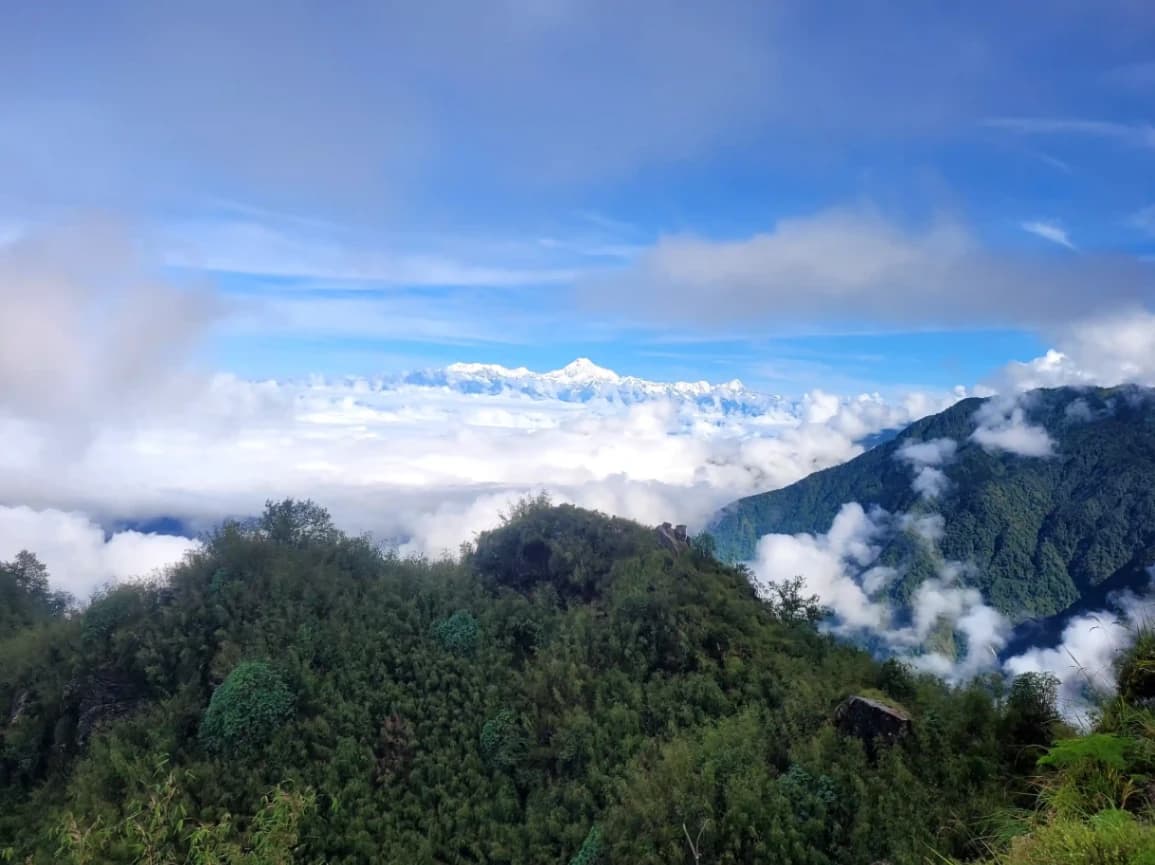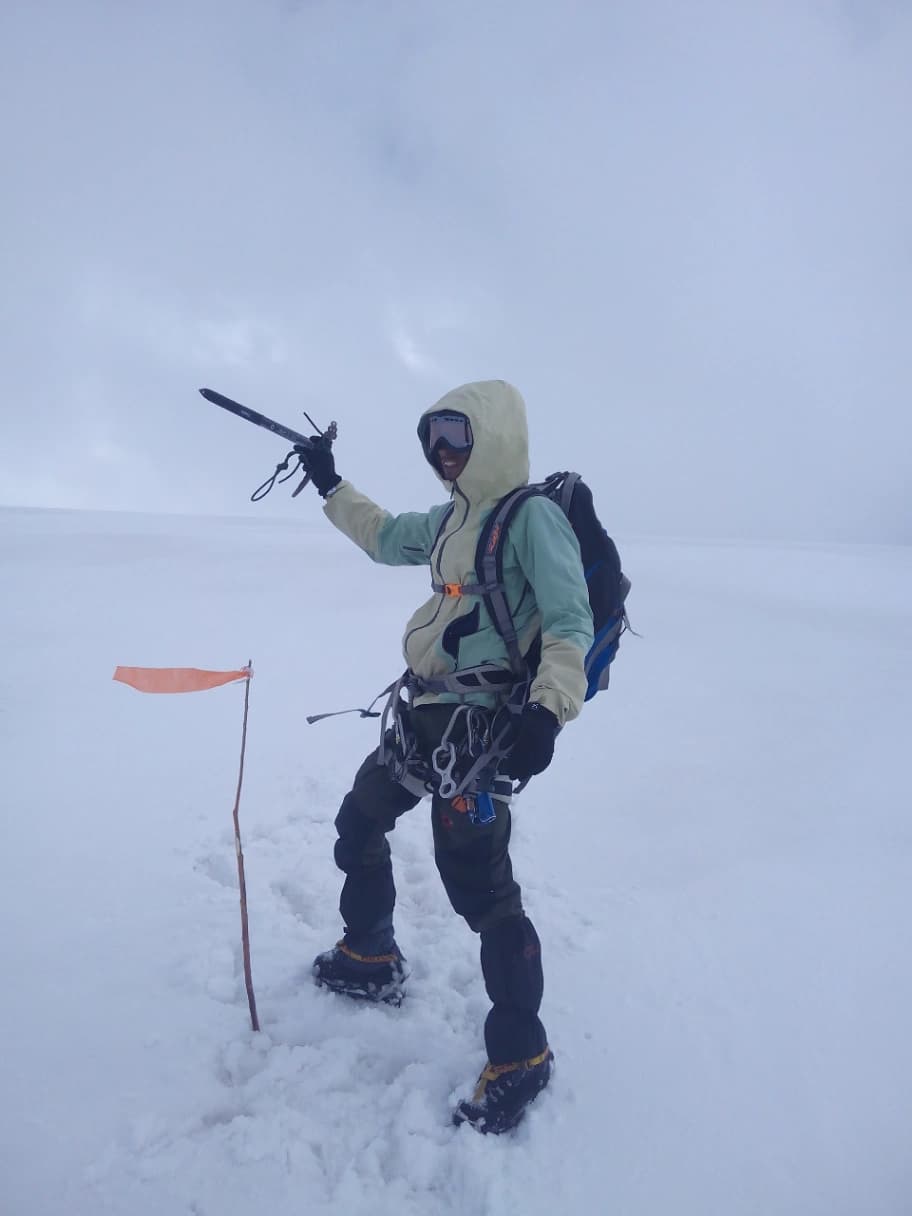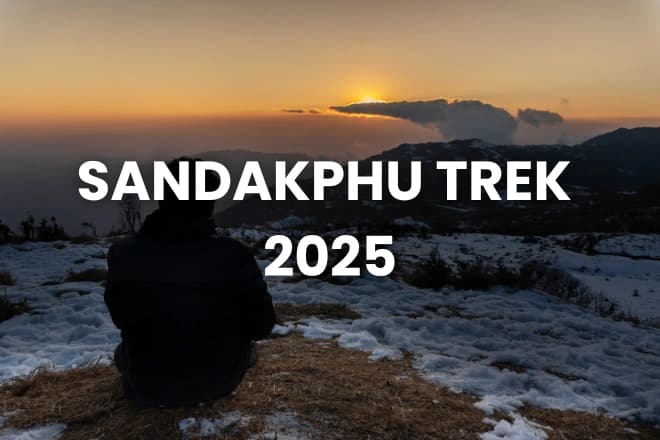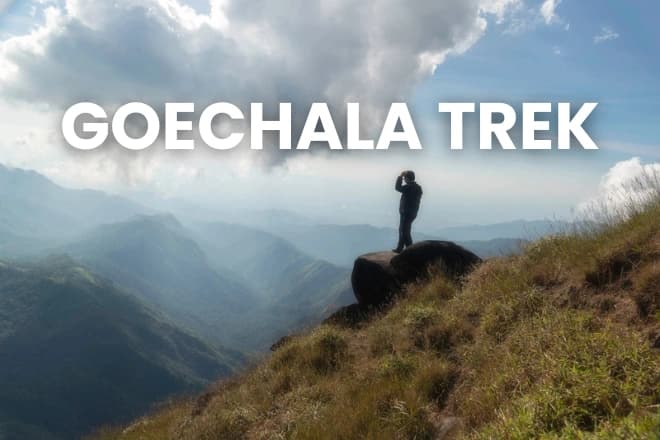The Goechala Trek is among the most popular and demanding treks in India that treats trekkers to the enchanting splendor of the Eastern Himalayas. Located in the Sikkim state, the trek is the access point to enjoy stunning vistas of high peaks, green valleys, and rich biodiversity in flora and fauna. Goechala Pass being the pinnacle point, this trek offers a wonderful experience to adrenaline junkies and nature lovers equally.
What is the Goechala Trek?
The Goechala Trek is an altitude trek that winds through dense forests and meadows and boulder sections to reach Goechala Pass on an altitude that stands at around 4,940 meters (16,210 ft). The trek provides some of the most beautiful scenery of the Kanchenjunga mountain range, the world’s third tallest mountain.
This is regarded by many to be one of India’s finest trekking routes and one ideal for those who seek to experience an intense but profoundly rewarding Himalayan adventure. The Goechala Pass itself is the benchmark of the trek and provides the trekkers with an opportunity to stand beneath the foot of the imposing Kanchenjunga massif.
Goechala Pass: The Pinnacle of the Trek
The destination par excellence for trekkers on this trip is Goechala Pass. Goechala Pass is situated in the Khangchendzonga National Park and offers an unbeatable view of the high mountain peaks that belong to the Kanchenjunga range. Trekkers are rewarded with panoramic views from this point on some of the world’s highest mountains like Kanchenjunga, Pandim, and numerous others in the Sikkim Himalayas.
On the pass itself, the scenery completely opens up with snowy mountains, rocky ground, and the open sky above inspiring awe and pride. Crossing the pass is the culmination of a grueling hike, but the feeling of having made it and being surrounded by nature makes it all worthwhile.
Goechala Trek Map: Navigating the Path
The Goechala Trek is an organized trail and finding your way along the trail is pretty easy if you are an experienced trekker. Nevertheless, because the trail is high and the weather can be unpredictable, it is advisable that the trekkers prepare well beforehand. The journey begins from Yuksom town in West Sikkim and proceeds gradually through several camps and viewpoints until you reach Goechala.
The route can be broken down into several segments, each offering a unique experience and different challenges. Some of the key stops include:
-
Yuksom: The starting point of the trek, a peaceful town with a rich cultural heritage.
-
Bakkhim: A small village surrounded by dense forests and views of the Kanchenjunga range.
-
Tsokha: The first major campsite, nestled amidst the forest.
-
Dzongri: One of the higher campsites, offering stunning views of the surrounding mountains.
-
Goechala Pass: The final destination, where trekkers can enjoy the majestic views of the Kanchenjunga range.
A map of the route is imperative, particularly when one is trekking in unfamiliar and uncharted territories. Trekkers use an illustrative Goechala trek map to plan out daily routines and stay on track.
Goechala Trek Best Time: When to Go?
The ideal time to do the Goechala Trek depends on the type of experience that you are seeking to achieve. You can do the trek throughout the year, but the preferable season depends on weather conditions, the level of difficulty in the trekking route, and the type of scenery you are seeking to see. In general, the best months to do the Goechala Trek are in the spring and autumn months.
Spring (March to May).
The period from March to May is among the peak seasons for the Goechala Trek. It is mild weather with temperatures between 5°C and 15°C and thus suitable to go for the trekking activity. The landscape is green and verdant with rhododendrons and other high-altitude flowers in bloom, and there are wonderful vistas and myriad colors to see.
Autumn (September to November)
September to November is another high season to trek to Goechala during autumn. Following the rains during the monsoons, the weather becomes clearer with crystal clear views of the Himalayan peaks covered with snow. The temperature is slightly cold between 0°C to 12°C and the skies are mostly clear with this making it the ideal season to trek to witness the majesty of the Kanchenjunga mountain ranges.
Goechala Trek in October: A Perfect Month for Adventure
The month of October is the best time to visit Goechala for trekking. The weather is just right during this period with the rainy season having passed long ago, and the sky is clear and the trails dry. The autumn season keeps the environment beautiful with colorful views and comfortable temperatures that make it an enjoyable experience.
October also presents an opportunity to see the stunning view of the Kanchenjunga peak on clear skies and ranks among the favorite months among trekkers. October is one of the mildest months, with comfortable daytime trekking accompanied by cool temperatures and crisp, cold nights enhancing the Himalayan experience altogether.
Goechala Trek Cost: What to Expect?
The price of the Goechala Trek depends on a variety of factors like the trekking company, duration of the trekking trip, and type of services offered. Generally, an INR 15,000 to INR 30,000 is charged on an average for a fully guided trip with accommodation, meals, and permits required. The price usually comprises:
-
Trekking Permits: The trek passes through the Khangchendzonga National Park, and trekkers are required to have permits for entry.
-
Accommodation: Basic guesthouses or tents are provided at various campsites along the trail.
-
Meals: Meals will be provided by the trekking agency, including breakfast, lunch, and dinner.
-
Guide and Support Staff: A certified guide, porter, and other necessary staff are usually included for safety and support throughout the trek.
While the trek itself is challenging, the cost includes all basic services required for a safe and comfortable experience. However, trekkers may need to budget extra for personal items, tips for staff, and any additional gear.
Goechala Trek Height: Understanding the Altitude
The Goechala Trek takes trekkers to heights greater than 16,000 feet, and Goechala Pass itself is around 16,210 feet (4,940 meters). The high altitude becomes very demanding on people who are not used to high-altitude walks. Trekkers follow gradual increases in altitude with rest days being integrated in to acclimatize to the conditions.
As one ascends to greater heights, the pressure is lower and there is less oxygen. Therefore, trekkers should watch out for altitude sickness symptoms like nausea, dizziness, and headaches. Proper acclimatization is important to prevent these problems, and it’s best to take it easy and drink plenty of fluids on the trek.
Goechala Trek in April: A Beautiful Time for Trekking
April is another great time to go on the Goechala Trek. It is the beginning of spring in this part of the world, and the climatic conditions are usually ideal to go on a trek. The temperatures are mild and trekkers are able to witness crystal clear skies and snow-covered mountains.
One of the pleasures of trekking in April is the chance to see the rhododendrons and other wildflowers bloom on the trail. The scenery is green and lush, and there are colorful flowers and trees in and around the forests throughout the landscape.
That being said, there can be unpredictable weather in April too with some snow falls on the higher elevations on the trek. Trekkers need to be prepared for sudden alterations in weather and carry correct equipment accordingly.
Goechala Trek by Indiahikes: A Guided Experience
April is also an excellent period to attempt the Goechala Trek. Spring in the area starts early this month, and the climatic conditions are usually ideal to go on the trek. The temperatures are mild and comfortable, and the trekkers can have clear skies and sights to behold with the white mountain peaks in the background.
One of the most memorable aspects of trekking during April is seeing the rhododendrons and the rest of the flowers bloom along the way. The scenery is green and the forests are cloaked in colorful hues, painting the landscape with an optical spectacle.
April does, however, introduce some unexpected weather and the occasional snow in the upper elevations of the trekking route. Therefore, trekkers should prepare for unexpected weather fluctuations and make sure to carry appropriate equipment suitable to the weather conditions.
Conclusion: An Adventure of a Lifetime
The Goechala Trek is an experience one will never forget if one loves high-altitude trekking and the unspoiled splendor of the Himalayas. With its panoramic view of the Kanchenjunga range, rugged terrains and distinctive landscape, it is an adventure that one will never forget and will cherish it lifelong.
Whether you go in October, in April, or any other month, the experience will be something to recall with pride. The trek offers an amazing chance to live with nature, to challenge your limits and to stand on the foothills of one of the world’s most beautiful mountain ranges.
Through meticulous planning, correct preparation and the right guidance, the Goechala Trek becomes an experience that will certainly make an indelible mark in your heart.


























